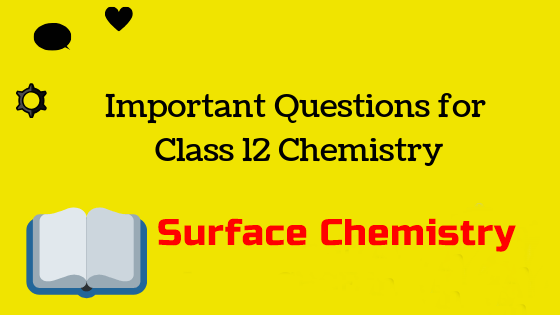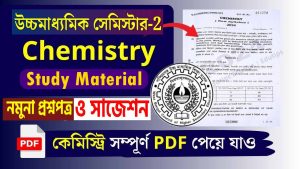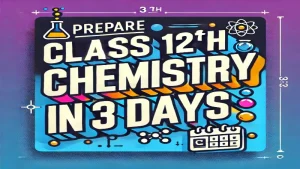Here in this post, we share Class 12 Surface Chemistry Important Questions in PDF Format, which you can download Now. Important questions for class 12 chemistry.
IMPORTANT QUESTIONS FOR CBSE CLASS 12 CHEMISTRY CHAPTER-5 SURFACE CHEMISTRY.

MCQ (Single Correct Type)
1. Which of the following statements is not true about chemisorption-
- A. It is irreversible in nature
- B. It is independent of temperature
- C. It has high activation energy
- D. It is highly specific in nature
2. Which of the following is true for physisorption-
- A. It increases with increase in temperature
- B. In physisorption, the entropy of the system increases
- C. Physisorption is non-spontaneous
- D. It involves low heat of adsorption
3. Which of the following statements is incorrect-
- A. Adsorbates can form single or multilayers on the surface of adsorbents
- B. The adsorption of a gaseous reactant on a solid surface increases with increase in the pressure of a gas
- C. The adsorption of a gaseous reactant on a solid surface increases with rise in temperature
- D. Finely divided charcoal has a greater power of adsorption than granular charcoal
4. Which of the following processes does not involve adsorption,
- A. Heterogeneous catalysis
- B. Homogeneous catalysis
- C. Froth floatation
- D. Gas mask
5. The critical temperatures of H2, CH4, NH, and CO2 are in the order H2 <CH4 < CO2 <NHg. Which of the following get adsorbed to a maximum extent, on 1g of activated charcoal, at a specific temperature-
- A. H2
- B. CH4
- C. CO2
- D. NH3
8. The mechanism of a chemical reaction in the presence and absence of a catalyst-
- A. remains the same, but in the presence of a catalyst, the energy of activation of the reaction is low
- B. is different and in the presence of a catalyst, the energy of activation of the reaction is low
- C. is different and in the absence of a catalyst, the energy of activation of the reaction is low
- D. remains the same, but in the absence of a catalyst, the energy of activation of the reaction is low
9. If the rate constant of a reaction at a specific temperature, in the presence and absence of a catalyst is given by k1, and k2 respectively, then-
A. k1 = K₂
B. k1 >k2
C. k1 <k2
D. cannot be predicted
10. For a reversible reaction in presence of a catalyst-
- A. only the rate of forward reaction increases
- B. only the rate of backward reaction increases
- C. both, the rate of forward and backward reactions increases to the same extent
- D. the rate of forward reaction is greater than the rate of backward reaction.
11. In absence and presence of a catalyst, in a reaction-
- A. the change in free energy remains the same whereas the change in enthalpy increases
- B. the change in free energy increases whereas the change in enthalpy remains the same
- C. the change in free energy as well as the change in enthalpy decreases
- D. the change in free energy as well as the change in enthalpy, both remains the same
12. Which of the following does not occur during adsorption of a gaseous reactant in presence of solid catalyst-
- A. Adsorption of the reactant molecules on the surface of the catalyst
- B. Desorption of the reactant molecules from the surface of the catalyst
- C. Desorption of the product molecules from the surface of the catalyst
- D. Diffusion of the product molecules from the surface of the catalyst
13. The highest optimum temperature for enzymatic activity in human body is-
- A. 298K
- B. 300K
- C. 310K
- D. 325K







